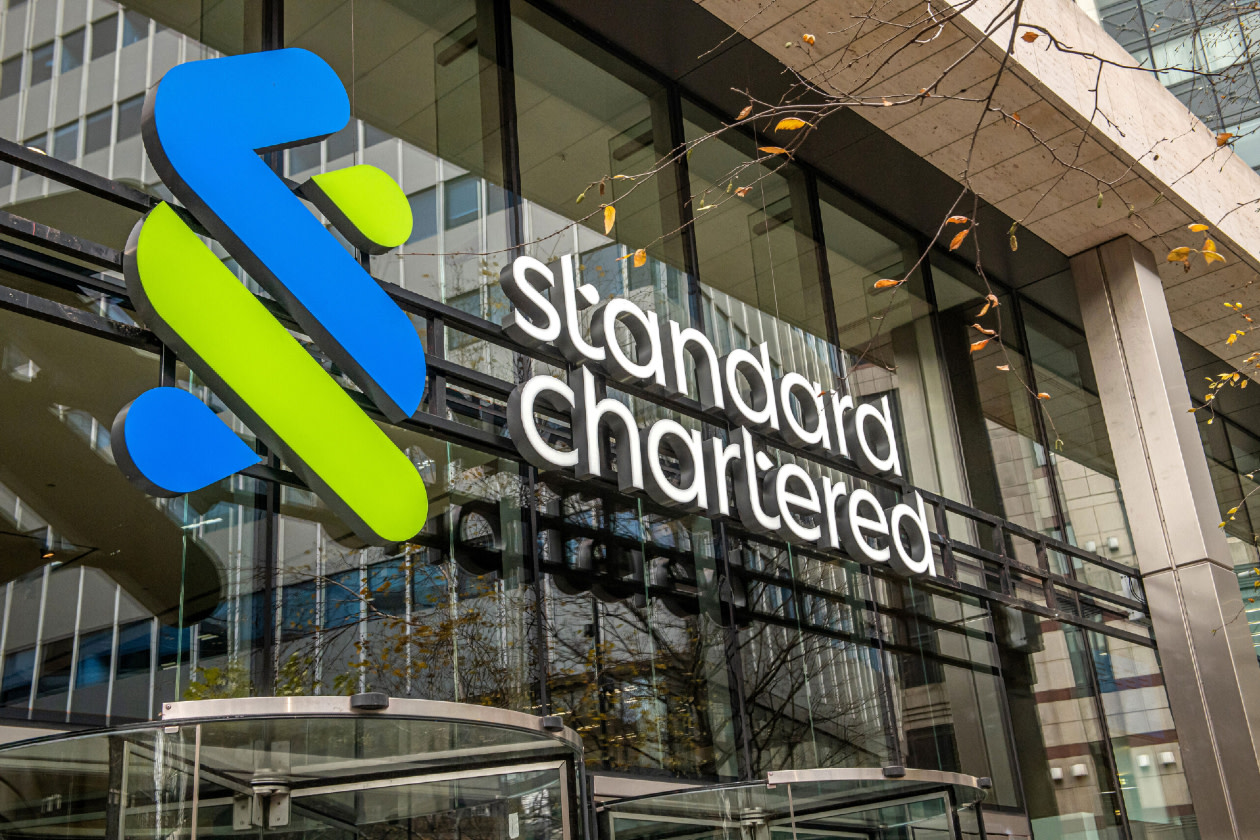Standard Chartered reported a 7% rise in first-quarter income to $5.4bn ($5.3bn expected), ignoring currency impacts. Growth was evenly split across interest income and non-interest income (which includes areas like wealth management and investment banking).
Underlying profit before tax was up 12% to $2.3bn ($2.1bn expected). Credit quality remains strong.
The group’s CET1 ratio, a key capital measure, was 13.8% at the end of the period (target 13-14%).
There was no change to full-year guidance. Operating income is expected below the 5-7% range, but growth from 2023-26 is tracking toward the upper end of the same range.
The shares were broadly flat in early trading.
Our view
Standard Chartered is doing well to manage the turbulence caused by Trump’s tariff storm. First quarter results were impressive all round, with perhaps the only niggle that full-year guidance didn’t get nudged higher. We’re taking that as some conservatism as opposed to an indication that trends are set to weaken.
Medium-term guidance out to 2026 shows promising signs. Volume growth, cost cuts and a benefit from the structural hedge are expected to help deliver a return on tangible equity approaching 13% in 2026 (2024: 11.7%). Markets have begun to price in that outcome, but we think there are still some risks as it’s highly reliant on strong growth from more volatile non-interest income.
Standard operates a sprawling business, both geographically and in terms of product ranges. Domestic Chinese exposure, especially in the commercial real estate sector, while a small part of the pie has been in focus.
Asian-focused banks like Standard and HSBC have both had to write down the value of Chinese assets in recent history. Investors will be pleased to see no real uptick in impairments taken here over the last few quarters.
Higher rates in key areas like Hong Kong and Singapore have been providing a tailwind. Rates are expected to come down, but there should be enough of a tailwind from asset growth, hedge income, and a benefit from clients switching back to shorter-term deposit accounts to support interest income. Standard has also done a good job reducing its exposure to rate changes in recent years.
Income from fees and trading is around half the business, and likely to be the side of the business driving growth over the coming year. Standard has spent several years investing in the Financial Markets and Wealth Management divisions to help drive income that’s a little less dependent on interest rates. These divisions are also less capital intensive which gives a little more wiggle room for things like buybacks – though none are ever guaranteed.
Despite a recent uplift, the valuation isn’t very demanding, the balance sheet’s in a good place, and there are growth drivers to work on. Management has done a decent job of spelling out the moving parts, and we think areas like Asian wealth management are an attractive segment to fuel growth.
That said, there’s still work ahead to convince markets that it can consistently deliver, and we prefer some of the other names in the sector that offer better near-term return profiles.
Environmental, social and governance (ESG) risk
The financials sector is medium-risk in terms of ESG. Product governance is the largest risk for most companies, especially those in the US and Europe with enhanced regulatory scrutiny. Data privacy and security are also an increasingly important risk for banks and diversified financial firms. Business ethics, ESG integration and labour relations are also worth monitoring.
According to Sustainalytics, Standard Chartered’s management of material ESG issues is strong.
Standard’s strong programs and policies are offset by involvement in multiple controversies, reducing its management score. However, the bank has improved disclosure in areas like data privacy, security, and product governance. It introduced external cybersecurity assessments designed by the Bank of England and Prudential Regulation Authority, and has management in place to ensure responsible product offerings. Improvement areas include lack of transparency in gender pay, high employee turnover, and poor integration of ESG into asset management.
Standard Chartered key facts
All ratios are sourced from LSEG Datastream, based on previous day’s closing values. Please remember yields are variable and not a reliable indicator of future income. Keep in mind key figures shouldn’t be looked at on their own – it’s important to understand the big picture.
This article is not advice or a recommendation to buy, sell or hold any investment.No view is given on the present or future value or price of any investment, and investors should form their own view on any proposed investment.This article has not been prepared in accordance with legal requirements designed to promote the independence of investment research and is considered a marketing communication.Non - independent research is not subject to FCA rules prohibiting dealing ahead of research, however HL has put controls in place(including dealing restrictions, physical and information barriers) to manage potential conflicts of interest presented by such dealing.Please see our full non - independent research disclosure for more information.


